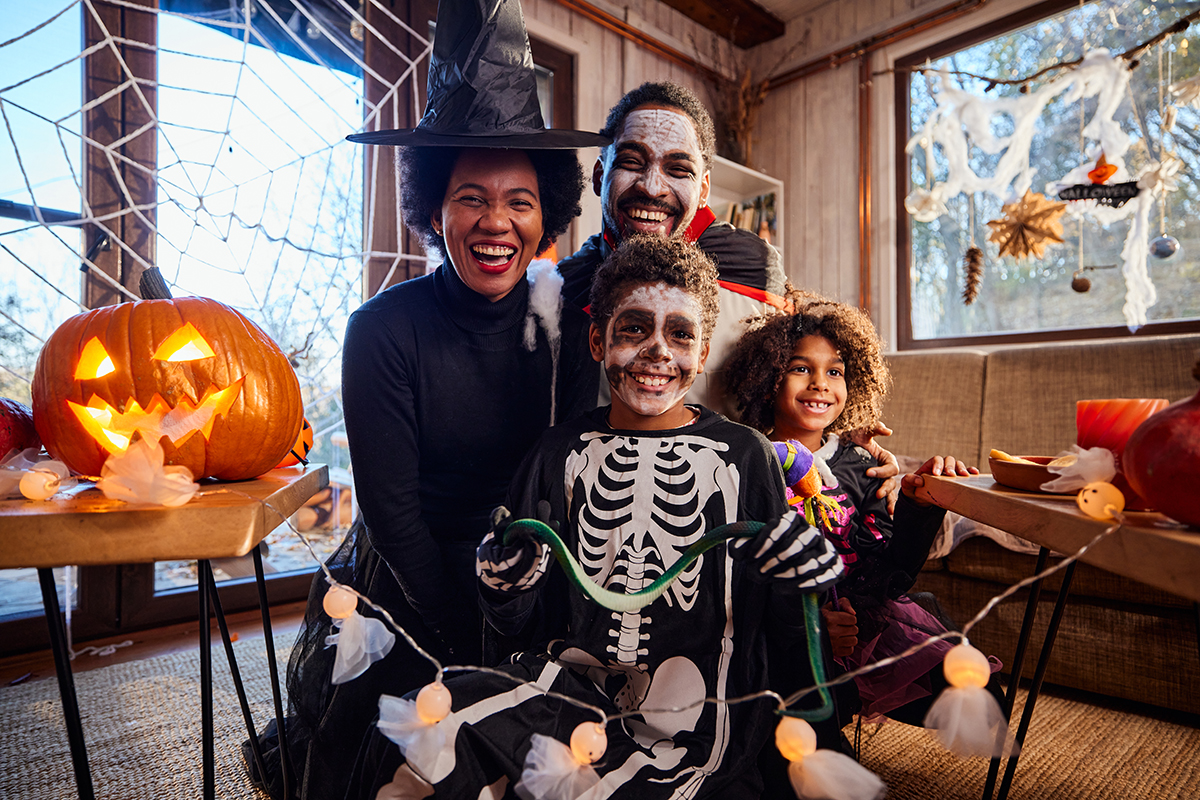
Halloween is approaching and your children have probably been talking about their costume plans since April. The part you’re really worried about—all the candy. Are you so worried about celebrating Halloween with type 1 diabetes (T1D) that you’re considering skipping the spooky day altogether?
That’s always an option, but hopefully you’ll reconsider.
Kids with T1D can have fun on Halloween. They can even enjoy the candy part, too. Here are a few tips on juggling T1D with the super sweet fun of Halloween.
Remember, it’s about so much more than candy.
Halloween is a community event that starts with dressing up! It’s fun, long before the candy arrives. For kids, Halloween is the topic of chats at school—“What are you gonna be?”—and the chance to dress up as their favorite superhero or movie character. It’s imagination and play and connecting with their friends.
Participating in Halloween is just as important as going to the prom in high school. It’s the elementary school version of the big social event. And the event itself is fun! How often does your child get to run around the neighborhood dressed up as Batman, a Ghostbuster, or Elsa?
Our Halloween Guide has more helpful tips to make your holiday scare-free, including carb counts for candy!
Let them eat candy! Seriously, it’s important.
For the rest of your child’s life, they will feel a lot of pressure to eat the perfect diet. They will feel guilt or shame for eating treats like candy or chocolate or ice cream. That constant pressure can also lead to disordered eating behaviors around food. The more you lecture or restrict or scold them for eating candy, the more they’ll likely desperately want it.
Instead, you can lighten that pressure and that guilt as the parent, starting in childhood. Halloween is a perfect opportunity to help your child learn how to indulge in the not-so-perfect treats, attempt to count the carbs and estimate insulin doses, and improvise if it doesn’t go so smoothly. Plus, Halloween candy is great to keep on hand to treat low blood sugar!
You can set boundaries.
Even kids without type 1 diabetes could use some limits when it comes to how much candy they eat on Halloween night! Create a plan with your child and don’t make it about diabetes or their blood sugar. For example:
- Step 1: “Alright, kiddo, we’ll enjoy three pieces of candy per night, okay?”
- Step 2: “First, let’s count how many pieces of candy you collected!”
- Step 3: “Great, let’s ditch the stuff you definitely don’t like.”
- Step 4: “Next, let’s choose the three pieces you’ll eat today for dessert.”
- Step 5: “Let’s count the carbs, estimate the insulin dose, and see how it goes!”
Take good notes: insulin and blood sugar.
You can learn from this year’s Halloween! It’s another opportunity to teach your child how to dose insulin around simple carbohydrates. Remember, someday they will be making their own food and insulin dose decisions without you. And even a wholesome meal is tricky to dose insulin for.
Use this as a learning opportunity—and don’t let stress or guilt creep in.
Count the carbs. Estimate the insulin dose. Write down the insulin dose. Write down what happened in the next 2-3 hours. Talk to your child about it: “Okay, looks like we needed a little more insulin with that candy! Or maybe a little more prebolus. Good job, kiddo!”
If their blood sugar is high, they can learn how to see that number without beating themselves up. Take a correction dose and move on.
Talk about balance: real food vs. treats.
Again, this is a learning opportunity. This is a chance to talk to your kiddo again about the importance of letting yourself enjoy some not-so-perfect treats and doing your best to manage your insulin and blood sugar levels. Then back to eating real food for your other meals.
Look beyond the day’s blood sugar levels. Let this holiday be a chance to build your child’s confidence in dosing insulin for tricky meals and reinforce positive self-talk when things don’t go perfectly.
Happy Halloween!